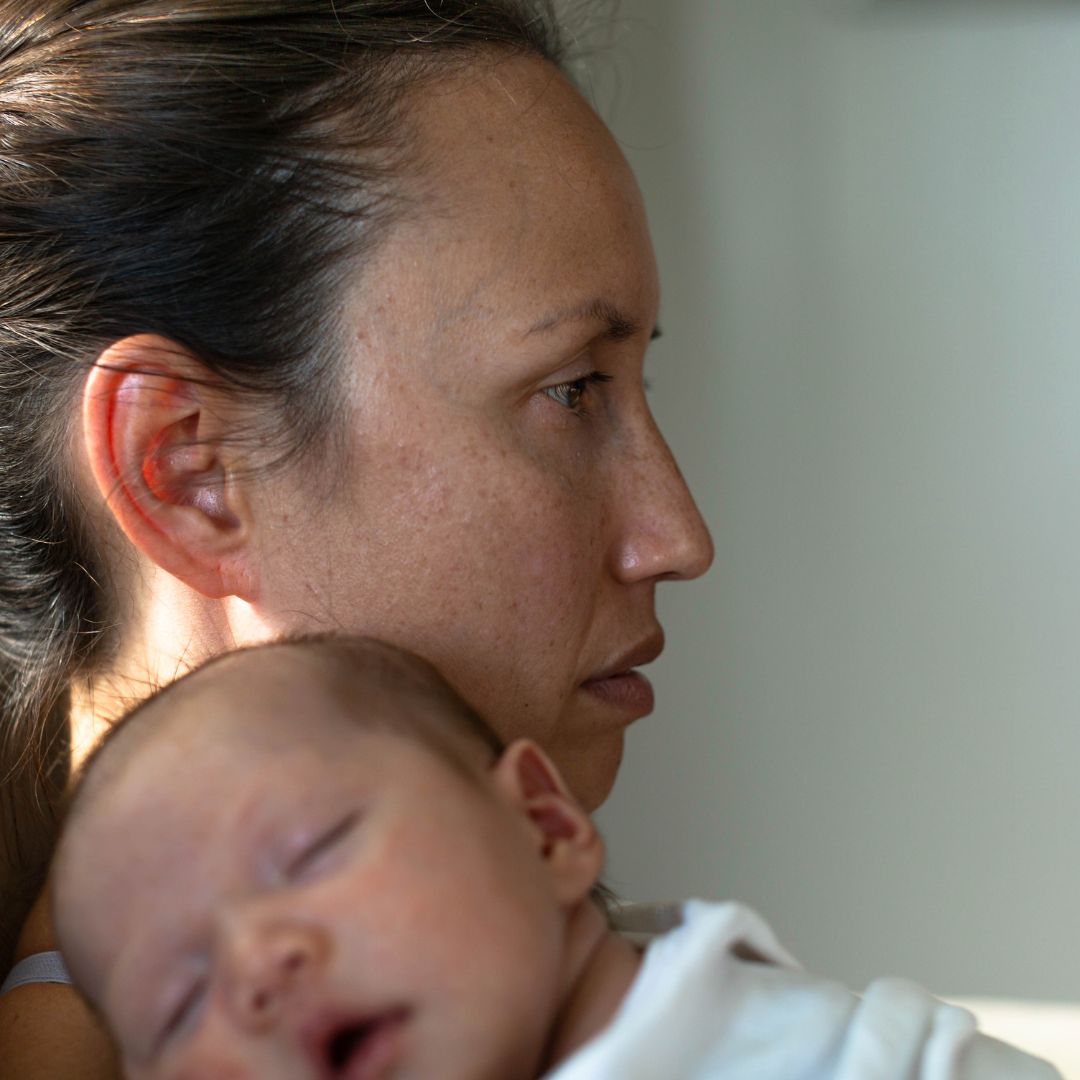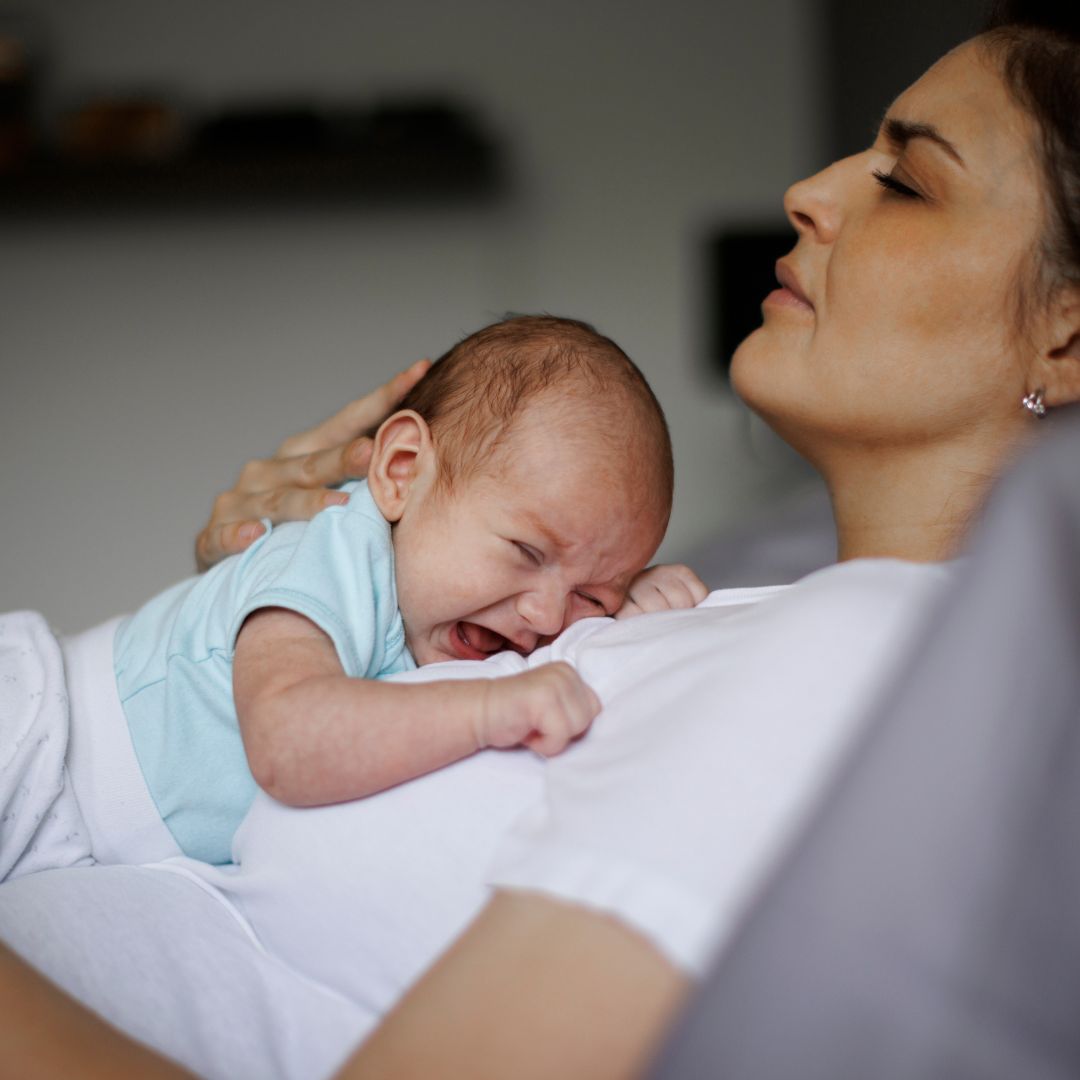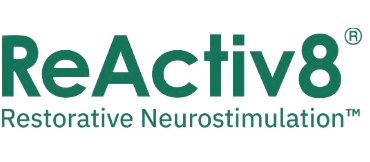Pregnancy is a time of profound physical transformation and intense emotional experiences. You might have navigated through the joy of feeling your baby’s first movements, the discomfort of swollen feet, the challenge of maintaining balance with a shifting center of gravity, and the anticipation mixed with anxiety about labor and delivery.
Now, as you transition into the postpartum period, whether you’re cradling your newborn or facing the indescribable heartache of loss, your body begins its journey back to what was once familiar. Yet, for many, this period is impaired by persistent lower back pain after pregnancy. With 25-43% of women reporting persistent lower back pain beyond 3 months postpartum, is experiencing lower back pain after pregnancy normal? Should you be concerned and seek immediate relief or treatment?
In this blog post, we’ll guide you through understanding lower back pain after pregnancy, exploring its common causes, and offering practical advice on managing and mitigating this discomfort.
Understanding Lower Back Pain After Pregnancy
The causes of lower back pain during and after pregnancy can be multifaceted, ranging from hormonal changes to physical stress on the body. During pregnancy, the body releases a hormone called relaxin, which loosens ligaments and joints in the pelvic area to prepare for childbirth. While this is a natural and necessary process, the resulting joint instability can strain the lower back, leading to discomfort and pain. Additionally, the weight gain associated with pregnancy can alter posture and put added pressure on the spine and supporting muscles, exacerbating the strain and leading to pain.
Overall, pregnancy significantly impacts the spine and supporting musculature. The growing uterus shifts the center of gravity, forcing the spine to adjust accordingly. This can lead to a condition known as lordosis, or an excessive inward curve of the lower back, which worsens the strain on the back muscles. Over time, these muscles can become overworked, weak, and more susceptible to injury, contributing to the persistence of lower back pain after pregnancy.
Identifying Persistent Back Pain
Identifying persistent low back pain after pregnancy is pivotal for new mothers seeking relief and understanding of their postpartum bodies.
Recognizing Signs of Prolonged Back Pain Post-Pregnancy
Persistent lower back pain after pregnancy can manifest in various ways, ranging from a dull, constant ache to sudden, sharp pains that limit mobility. Unlike transient pain that dissipates with time, persistent back pain lingers or intensifies over six months, indicating the need for a more targeted approach to management.
Certain activities are known to exacerbate lower back pain among postpartum women. These include prolonged sitting or standing, carrying the baby or other heavy loads without proper support, breastfeeding without adequate back support, and returning to high-impact exercises too soon after delivery. Each of these activities can place additional strain on an already sensitive lower back, amplifying pain and discomfort.
Muscle Dysfunction: A Common Culprit
Muscular dysfunction emerges as a pivotal factor in the persistence of lower back pain after pregnancy, influencing both the severity and duration of symptoms experienced by new mothers. In the context of chronic low back pain, it refers to the impairment or abnormal functioning of the back muscles. This includes issues such as muscle weakness, decreased muscle endurance, muscle imbalance, and altered muscle firing patterns. During and after pregnancy, the body undergoes significant changes that can lead to muscle dysfunction. The additional weight and altered body mechanics put increased strain on the lower back, potentially leading to muscle weakness and imbalance. Furthermore, the muscles in the pelvic region, which are crucial for supporting the lower back and spine, may also weaken due to the stress of giving birth.
A critical aspect of muscle dysfunction is the alteration in muscle firing patterns. A study in the Journal of Gait and Posture highlighted that postpartum women often display altered muscle activation patterns in their abdominal muscles and pelvic muscles. These alterations can lead to decreased support for the spine, contributing significantly to the experience of lower back pain after pregnancy. This loss of coordinated muscle support not only predisposes one to pain but also increases the risk of injury during daily activities and physical exertion.
Seeking Professional Help

Seeking professional help for lower back pain after pregnancy becomes crucial when the discomfort persists for an extended period, typically more than six months. The persistent aches and pains experienced during daily activities—such as brushing teeth, bending over, cleaning, or simply standing up—can serve as significant indicators of underlying issues, notably muscle dysfunction. New mothers need to recognize that while lower back pain is a common postpartum condition, its continuation beyond the typical recovery period warrants a professional evaluation.
A study underscores the prevalence and persistence of postpartum back pain, noting that the majority of women report having recovered from lower back pain within six months after childbirth. Not to mention, according to the Lancet Global Health, only 32% reported having persistent lower back pain 3 months postpartum. This statistic serves to highlight the critical need for postpartum women to seek medical advice if they encounter prolonged back pain, as it may signify more complex complications such as muscular dysfunction or pelvic girdle pain.
The persistence of lower back pain after pregnancy beyond 6 months, especially when it interferes with daily life, is a clear indication that professional intervention is necessary.
Diagnostic Procedures for Lower Back Pain After Pregnancy
Identifying the underlying causes of lower back pain after pregnancy involves a comprehensive approach, leveraging a variety of diagnostic tests to achieve a precise diagnosis. These diagnostic procedures are crucial for formulating an effective treatment plan tailored to the specific needs of postpartum women.
MRI (Magnetic Resonance Imaging): An MRI is often employed to get a detailed view of the soft tissues, including muscles and discs in the spine. This imaging technique is particularly useful in identifying issues such as disc herniation or spinal stenosis, which could contribute to lower back pain.
X-rays: While X-rays are not as effective in visualizing soft tissues, they are invaluable in detecting skeletal issues like fractures or spinal misalignments. This can be important for postpartum women who may have experienced pelvic bone shifts during childbirth.
CT Scan (Computed Tomography): Combining X-ray with computer technology, CT scans provide a more detailed cross-sectional view of the spine than traditional X-rays. This can help in pinpointing specific bone problems or spinal degeneration.
Understanding Test Results and Implications
Interpreting the results from these diagnostic tests requires a nuanced understanding of the postpartum body’s unique changes. For instance, MRI findings indicating mild bulging discs, common in the general population, may or may not be the pain source in postpartum women. Healthcare providers analyze test results in conjunction with clinical symptoms and physical examinations to determine the relevance of findings to the patient’s chronic pain.
The implications of diagnostic results are pivotal in guiding treatment. For example, if an MRI reveals significant disc herniation pressing on a nerve root, targeted therapies such as physical therapy exercises, epidural injections, or even surgery may be considered. Conversely, normal imaging results despite severe pain might direct the investigation towards muscular or neuropathic pain, which requires different treatment approaches.
Medication and Pain Management for Lower Back Pain After Pregnancy
For the management of lower back pain after pregnancy, healthcare providers often recommend a graduated approach to medication, starting with non-prescription options before considering prescription drugs. Over-the-counter (OTC) pain relievers such as acetaminophen (Tylenol) are usually the first line of treatment due to their safety profile during breastfeeding. Nonsteroidal anti-inflammatory drugs (NSAIDs), like ibuprofen (Advil, Motrin) and naproxen (Aleve), may also be used cautiously for short-term relief, as they offer anti-inflammatory benefits as well as provide pain relief.
In cases where OTC medications are insufficient, prescription medications, including stronger NSAIDs or muscle relaxants, might be provided. However, the use of these must be carefully balanced against potential risks, especially for breastfeeding mothers. The Frontiers in Pediatrics provides guidelines on medication use during breastfeeding, highlighting the importance of consulting a healthcare provider before starting any new medication.
ReActiv8: Innovative Pain Relief Approach for Postpartum Back Pain

For women experiencing persistent pain postpartum, ReActiv8 offers a groundbreaking solution aimed at addressing the root cause of mechanical chronic lower back pain (CLBP). Traditional treatments often fail to provide lasting relief because they do not tackle the fundamental issue—muscles in the lower back that are crucial for preventing painful movements may not be functioning correctly. ReActiv8 changes this paradigm through a novel approach known as Restorative Neurostimulation.
The ReActiv8 system is specifically designed to stimulate the nerves controlling the muscles that stabilize the lumbar spine. This stimulation is key to interrupting the vicious cycle of pain, muscle degeneration, and functional loss prevalent in individuals with CLBP. By targeting the underlying muscular dysfunction, ReActiv8 not only helps alleviate pain but also fosters long-term improvements in the back’s stability and function.
Characterized as a restorative therapy, ReActiv8 is the first and only of its kind in the realm of neurostimulation therapies. The procedure to implement ReActiv8 is minimally invasive, making it a viable option for new mothers seeking relief from debilitating lower back pain without undergoing extensive surgery.
How One Mom Overcame Chronic Back Pain with ReActiv8
Meet a former college athlete who struggled with back pain that worsened into constant, intense pain after her second pregnancy.
After trying multiple therapies, chiropractic visits, and pain medications with little success, she discovered ReActiv8.
Watch her story to see how this minimally invasive device helped her overcome persistent back pain, enabling her to lead an active lifestyle and feel physically stronger than she had in years.
Ready to say goodbye to lower back pain after pregnancy? Consult your healthcare provider or a specialist trained in ReActiv8 today.
Learn More About ReActiv8® For Chronic Lower Back Pain Relief Today!
Lifestyle Changes for Pain Relief
Your lifestyle choices can also have a significant impact on managing lower back pain after pregnancy. Here are some habits and activities that may help alleviate pain and promote healing:
- Exercise: Gentle exercises like walking, swimming, or yoga can improve flexibility, strength, and mobility in the back and abdominal muscles, reducing pain. Pelvic floor exercises should also be included to strengthen the deep pelvic floor muscles.
- Posture correction: Practicing good posture while sitting, standing, and lifting can help reduce strain on the lower back muscles, reducing pain.
- Ergonomic adjustments: Making ergonomic adjustments to your work setup, such as using a supportive chair or standing desk, can also improve posture and relieve pressure on the lower back.
- Proper lifting techniques: When lifting heavy objects, remember to use smart lifting techniques to prevent lower back injury. For example, you should bend at the knees and keep your back straight to avoid straining the lower back muscles.
- Weight management: Excess weight can put added strain on the lower back, so maintaining a healthy weight through diet and exercise may help alleviate pain.
- Stress management: Chronic stress can contribute to muscle tension and exacerbate chronic back pain. Finding ways to manage stress, such as through relaxation techniques or therapy, can help reduce pain.
- Sleeping position: Sleeping on your side with a pillow between your knees can help relieve pressure on the lower back, promoting better sleep and reducing pain.
- Supportive belts and pillows: Specialized belts and pillows designed to support the lower back during daily activities or while sleeping may also provide relief from pain.
- Listen to your body and avoid overexertion: Start slow with any new activity or exercise and take breaks when needed. Consult with a healthcare provider or physical therapist for personalized recommendations on how to incorporate exercise and activity into your routine without causing further strain on your lower back.
Final Thoughts
Lower back pain after pregnancy is a common yet treatable condition that affects many new mothers. While the road to recovery may involve various treatments—from medication and physical therapy to innovative solutions like ReActiv8—it’s crucial to approach pain management holistically, considering lifestyle changes that can further alleviate discomfort and improve overall well-being. Remember, you don’t have to live with lower back pain; options like ReActiv8 provide hope for a pain-free future by addressing the issue at its core.
Discover how ReActiv8 can help you reclaim your life from chronic lower back pain.
Learn More About ReActiv8® For Chronic Lower Back Pain Relief Today!
